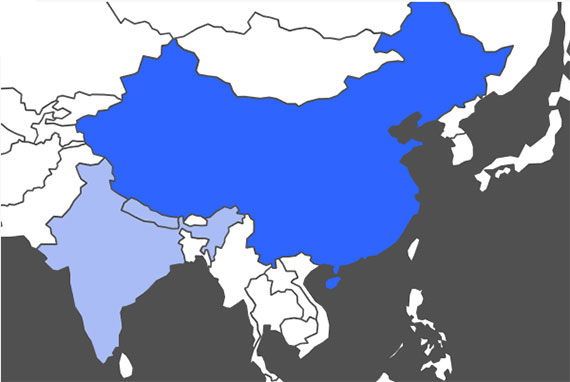Indiana University is one of a handful of American universities that offer classes in the Tibetan language. We invite you to take advantage of a rare opportunity to learn a fascinating language that opens the door to one of the world’s most intriguing cultures. Every year, the Department of Central Eurasian Studies (CEUS) offers introductory, intermediate, and advanced Tibetan language courses, as well as more courses in literary Tibetan! Tibetan language classes are taught by the IU Senior Lecturer in Tibetan.
Tibetan language study in CEUS

Tibetan language learning as part of the CEUS undergraduate major and minor
Tibetan is one of the languages available for the CEUS undergraduate major. Tracks with two or three years of language study are available.
Fulfill your foreign language requirement in a small class with dedicated teachers. You can also receive a CEUS minor with two years of Tibetan language study and a related culture course.
IU Course Offerings:
Course offeringsare made available in accordance with class level and student interest. Tibetan courses are offered year-round.
Why study Tibetan?
Over the centuries, Tibetan monks preserved and elaborated Indian teachings in Buddhist philosophy—but also history, medicine, grammar, and more. Mongol and Manchu emperors sought Tibetan lamas as tutors and Tibetan monks became well-known in the great cities of Asia.
Now whether under Chinese rule or in exile, Tibetans are trying to adapt their civilization to modern times. Learning Tibetan will make you part of that conversation!
Tibetan is spoken by peoples across a wide area of eastern Central Asia bordering the Indian subcontinent, including the Tibetan Plateau and the northern Indian subcontinent in Baltistan, Ladakh, Nepal, Sikkim, and Bhutan. The classical written form is a major regional literary language, particularly for its use in Buddhist literature.
The dialects of U-Tsang (otherwise known as Central Tibet, including Lhasa), Kham, and Amdo are generally considered to be dialects of a single Tibetan language, especially since they all share the same literary language. Dzongkha, Sikkimese, Sherpa, and Ladakhi are generally considered to be separate languages.
The Tibetic languages are spoken by over 8 million people. With the worldwide spread of Tibetan Buddhism, the Tibetan language has spread into the Western world and can be found in many Buddhist publications and prayer materials; with some Western students learning the language for translation of Tibetan texts.
Audio transcript:
Tashi delek!
Hello!
Audio transcript:
Khye rang ku zuk de po yin pe?
How are you?
Audio transcript:
Je ma je yong.
See you later.


